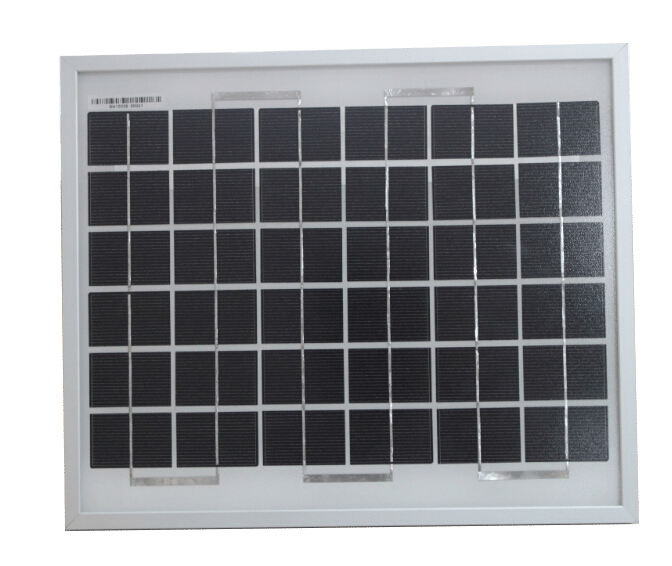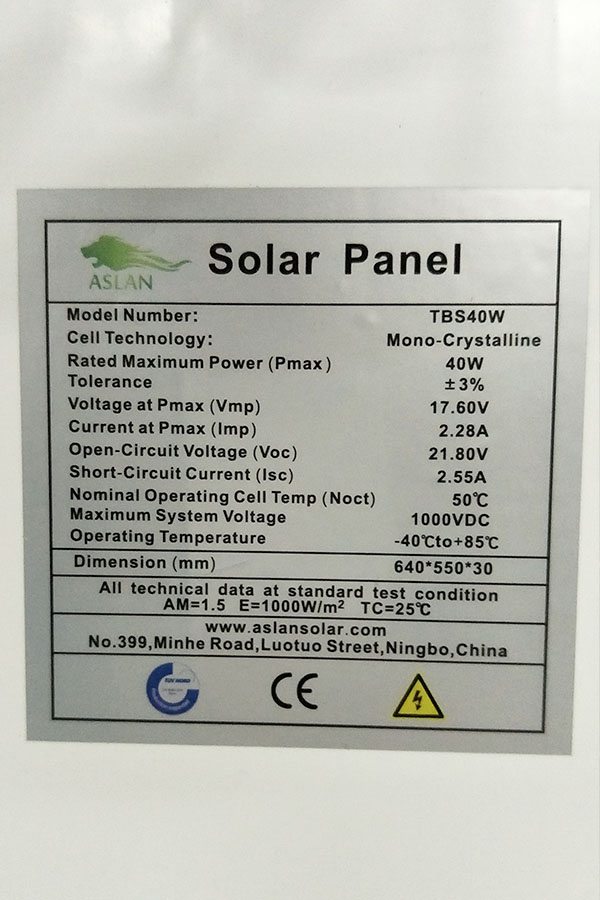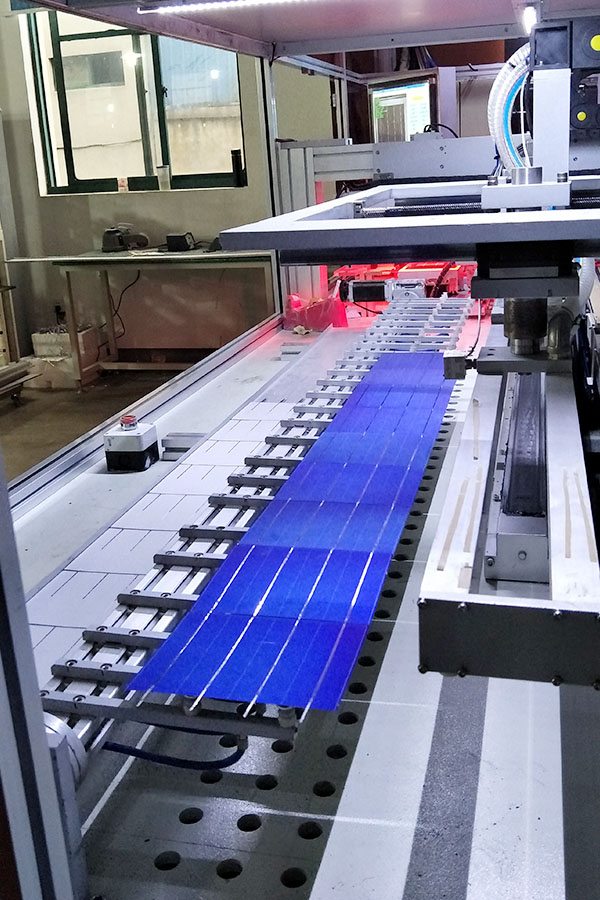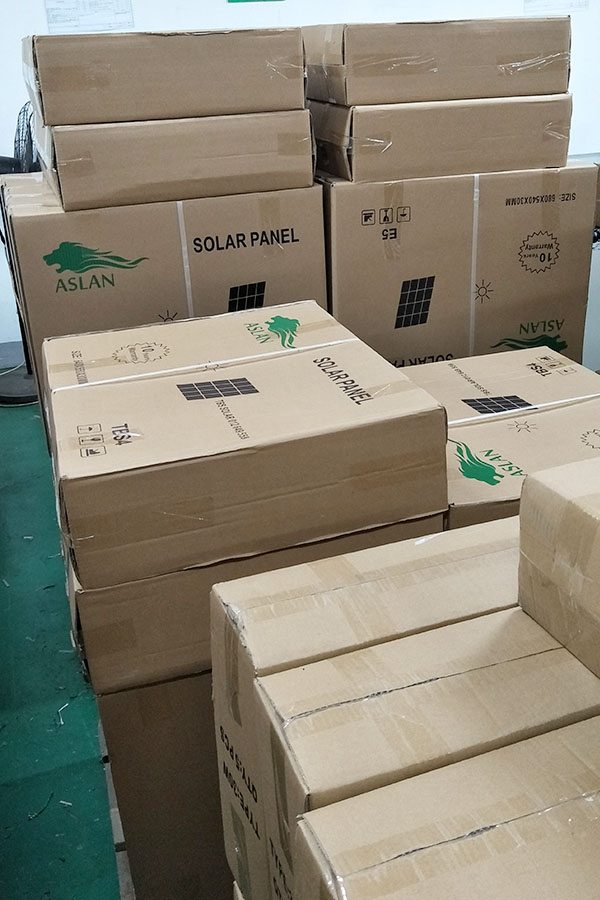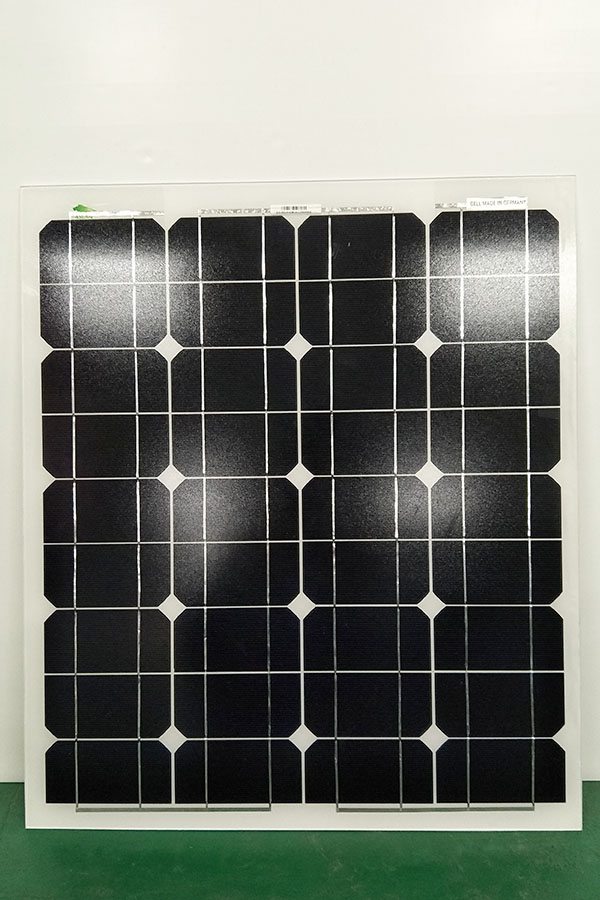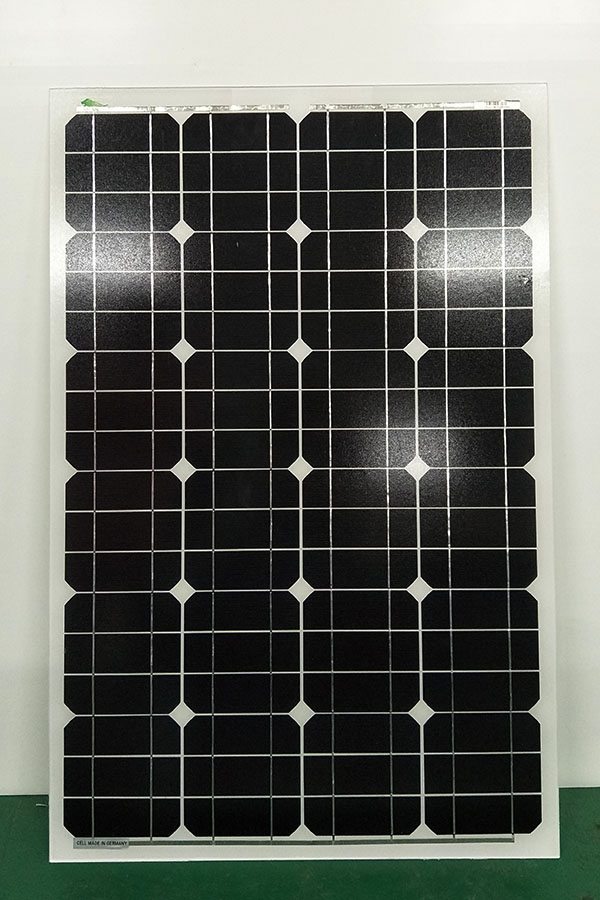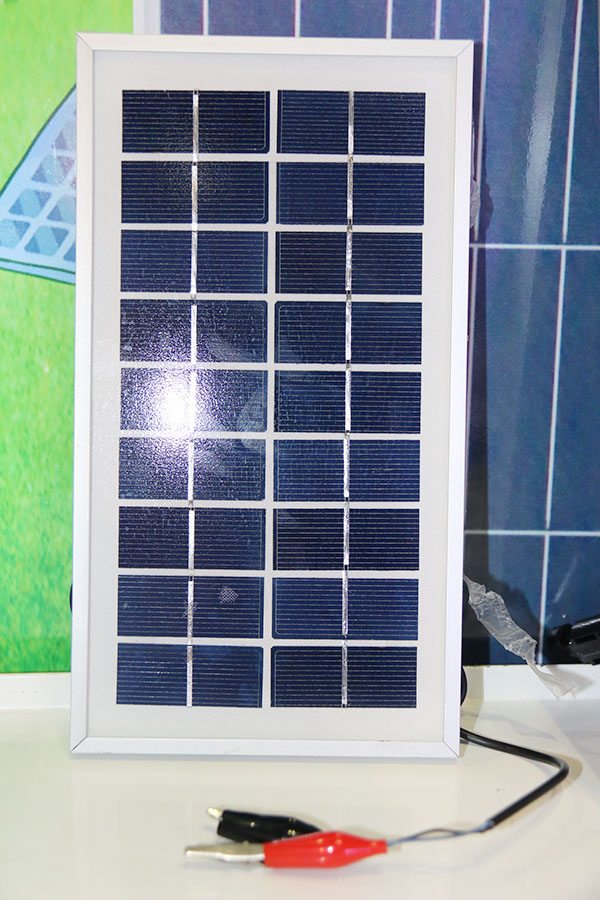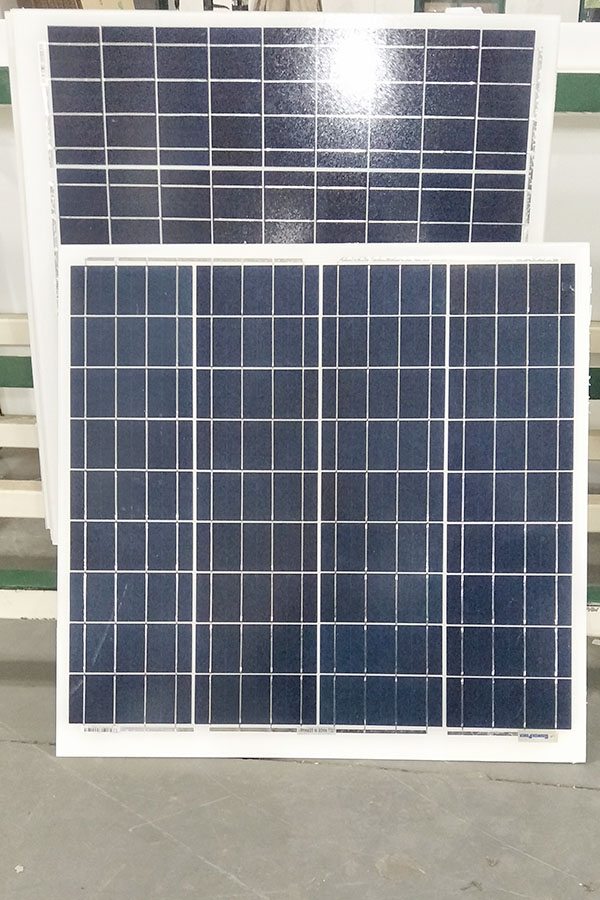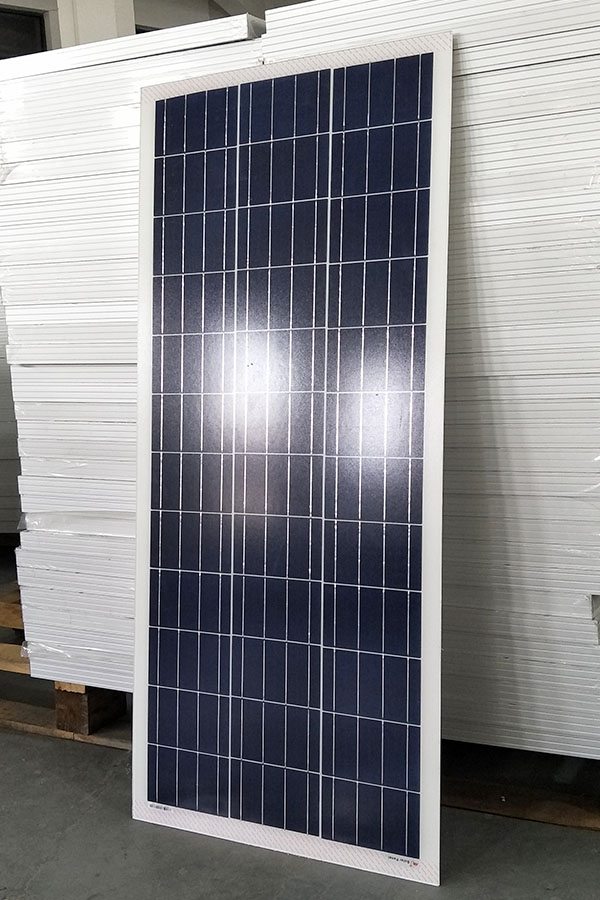High Quality Mono-Crystalline 10W Solar Panel Factory in luzern
Short Description:
We enjoy a very good reputation among our customers for our excellent product quality, competitive price and the best service for High Quality Mono-Crystalline 10W Solar Panel Factory in luzern, It is our great honor to meet your demands.We sincerely hope we can cooperate with you in the near future.
Mono-Crystalline 10W Solar Panel
Technical parameter
Maximum Power(W) 10W
Optimum Power Voltage(Vmp) 17.56V
Optimum Operating Current(Imp) 0.58A
Open Circuit Voltage(Voc) 21.35V
Short Circuit Current(Isc) 0.64A
Mechanical Characteristics
Cell Type Mono-crystalline 52x35mm
No of Cell 36 (4x9pcs)
Dimensions 250x370x17mm
Weight 1.2Kg
Front Glass 3.5mm,High Transmission, Low Iron,Tempered Glass
Junction box IP65 Rated
Output Cable TUV 1×4.0mm2/UL12AWG,Length:900mm
Temperature and Coefficients
Operating Temperature(°C): -40°C ~ + 85°C
Maximum System Voltage: 600V(UL)/1000V(IEC) DC
Maximum Rated Current Series: 15A
Temperature Coefficients of Pmax: -0.47%
Temperature Coefficients of Voc: -0.389%
Temperature Coefficients of Isc: 0.057%
Nominal Operationg Cell Temperature (NOCT): 47+/-2°C
Materials of solar panel
1).Solar Cell——Mono-crystalline solar cell 52*35mm
2).Front Glass——-3.2mm, high transmission, low iron, tempered glass
3).EVA——-excellent anti-aging EVA
4).TPT——-TPT hot seal made of flame resistance
5).Frame——anodized aluminum profile
6).Junction Box——-IP65 rated, high quality, with diode protection
Superiority: high quality anodized aluminum frame, high efficiency long life, easy installation, strong wind resistance, strong hail resistance.
Features
1. High cell efficiency with quality silicon materials for long term output stability
2. Strictly quality control ensure the stability and reliability, totally 23 QC procedures
3. High transmittance low iron tempered glass with enhanced stiffness and impact resistance
4. Both Poly-crystalline and Mono-crystalline
5. Excellent performance in harsh weather
6. Outstanding electrical performance under high temperature and low irradiance
Quality assurance testing
Thermal cycling test
Thermal shock test
Thermal/Freezing and high humidity cycling test
Electrical isolation test
Hail impact test
Mechanical, wind and twist loading test
Salt mist test
Light and water-exposure test
Moist carbon dioxide/sulphur dioxide
Solar Power for overlanders. The Overland Workshop, part-3.
Solar power enables the overland traveller added independence to stay at any one location without an engine start. When correctly set up, it means that electrical energy can be used without the need to replace it by driving, plugging in shore power from a camp site, or idling the vehicle engine – to replace the energy consumed. Food can be kept fresher for longer, cameras and laptop devices batteries charged, and of course, drinks kept icy cool. Some even use the power systems to make ice. The most convenient system to install in a vehicle is based on solar panels linked to the vehicle auxiliary battery. In this video, Andrew St Pierre White explains a solution that he built for his World Cruiser, based on his experiences in African bush lodges and the many overland vehicles he has built. Some of the challengers and solutions are explained.
This video is brought to you by 4xOverland, makers of the best overland videos on the web. If you love Andrew’s videos? Then support more here: https://www.patreon.com/Andrew_StPierre_White?ty=h
ANDREW’S WEBSITE: http://4xoverland.com
INSTAGRAM: https://www.instagram.com/4xoverland_com/
ANDREW’S OTHER YOUTUBE CHANNEL: http://bit.ly/YouTubeASPW
ANDREW’S 4X4 BOOK: http://bit.ly/Four_Wheel_Drive
ANDREW’S AWARD-WINNING MEMOIR: http://bit.ly/Torn_Trousers
ANDREW’S ADVENTURE FILM COURSE SHOOTING 50% discount coupon: http://bit.ly/Shooting_Course99
ANDREW’S ADVENTURE FILM COURSE EDITING 50% discount coupon: http://bit.ly/Editing_Course99
FACEBOOK: https://www.facebook.com/4xoverland/
TWITTER: https://twitter.com/4xOverland
Solar cooking system can cook up to two kilograms or four-and-a-half pounds of chicken in about two hours.
For more news visit ☛ http://english.ntdtv.com or Follow us on Twitter ☛ http://twitter.com/NTDTelevision
Roadside food vendors in the tropical Mexican city of Oaxaca (pronounced Wa-harka) are going green, re-fitting their gas-powered food stalls with solar technology. For a Swiss solar cooking pioneer and activist who wants to change Mexico and the world, it’s happening one street cart at a time.
A Mexican staple – street vendor Alfredo Garcia Martinez serves tacos in the city of Oaxaca.
But Martinez now uses just half the usual amount of gas to cook his food, thanks to a solar powered stove.
The technology focuses sunlight using parabolic screens covered with mirrors or reflective paper.
And on a sunny day, the system can cook up to two kilograms or four-and-a-half pounds of chicken in about two hours.
The solar kitchen is the brainchild of Swiss engineer Michael Götz, who has worked on using solar power for 12 years.
[Michael Götz, Solar Cook and Energy Consultant]:
“Everyone knows there is climate change, and petrol is getting scarce so we have to change our energy system. The sun is one of the future energy systems, so we are preparing now the future for solar energy in Mexico.”
Approximately 28 million people use wood to supply their energy needs in rural Mexico, contributing to deforestation and green house gases.
Oaxaca native Lorena Harp is familiar with solar powered cooking devices such as this pot and helped Götz introduce his solar kitchens to small businesses in Mexico.
Harp says it’s satisfying to see how much people gain from using the solar powered cooking tool.
[Lorena Harp, Ecological Projects Coordinator, Helu Organization]:
“They are producing less smoke, they are breathing less carbon dioxide; they are saving money, they are saving time by not using wood – they used to invest many hours doing this – now they can save wood, time and money with this type of technology.”
The stoves are not yet for sale, but will retail at around 900 U.S. dollars.
They’re not cheap but with more than 300 days of sunshine per year, Martinez believes his new system will eventually pay for itself.
